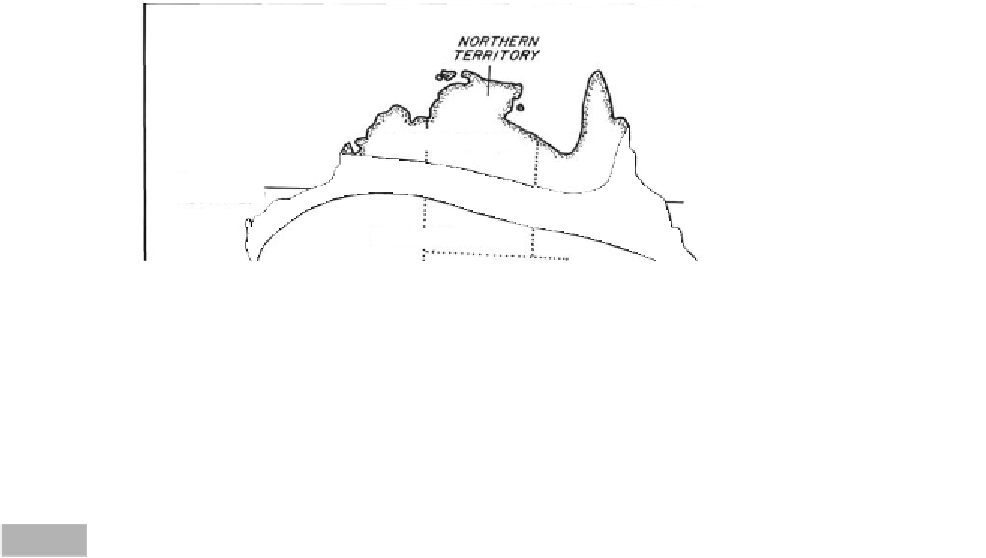Geoscience Reference
In-Depth Information
These recent fires have led to a shift in the way
fires are dealt with in the United States. Prior to the
Yellowstone fire of 1988, fire suppression took prece-
dence. This led to the accumulation of abundant fuel
stores and more intense firestorms when fire inevitably
broke out. Since then, protection of human life and of
property have become the first and second priorities,
respectively, in fire prevention and management. An
emphasis has also been placed upon urban wildfires,
including fuel reduction programs and education about
hazard minimization. While government bodies and
agencies are mainly responsible for fire management,
private property owners are also being encouraged and
educated in fire prevention and protection in urban
vegetated areas. Importantly, wildfires are now recog-
nized as a critical natural process for the health of
ecosystems. The Forest Service has instituted a new
fire management policy called Fire 21. Unless lives and
property are threatened, fires will be allowed to burn
as part of their natural ecological role.
witnessed only in the United States and Canada before
the 1940s. Australian bushfires are also unique because
of the highly flammable nature of Australian forest
vegetation. Globally, Australian bushfires compare in
size to the largest recorded in North America. While
loss of life is now minimal in North America because of
efficient evacuation procedures and the nature of set-
tlement, in Australia it appears to be increasing because
of expansion of urban populations into rugged bush
country. Mention has been made of the free-burning
nature of forest fires in northern Canada. While
attempts are made in Australia to put out fires, many
in inaccessible hill country are left to burn. These fires
pose a threat directly if they change direction under
strong winds, and indirectly because they provide a
source for fire spotting beyond the limits of the main
fire-front. Australian bushfires are also impossible to
control once they become wildfires, because of the high
flammability of the bush. Some of the most intense fires
were the conflagrations in Hobart in 1967 and south-
eastern Australia in 1983.
The map in Figure 7.7 shows that the spatial occur-
rence of fires in Australia is seasonally controlled.
The tropical zone has a winter-spring fire season,
because the summer is usually too wet and grasses will
not cure and dry out before spring. The fire season
progresses southward and across the continent along
the coasts through the spring. By late spring-summer,
Aus
tralia
(Luke & McArthur, 1978; Powell, 1983; Oliver et al., 1984;
Voice & Gauntlett, 1984; Webster, 1986; Pyne, 1991)
Conditions
Australian bushfires are unique, because they represent
the present-day occurrence of deadly fires previously
Northern
Territory
Winter & Spring
Spring
Western
Australia
Australia
Queensland
Queensland
Spring &
Summer
n
Summer
N
ew Sou
th
Wales
Adelaide
Sydney
S
Canberra
South
Australia
Melbourne
Victoria
Tasmania
Hobart
0
1000 km
Pattern of seasonal bushfires in Australia (after Luke & McArthur, 1978).
Fig. 7.7




















































